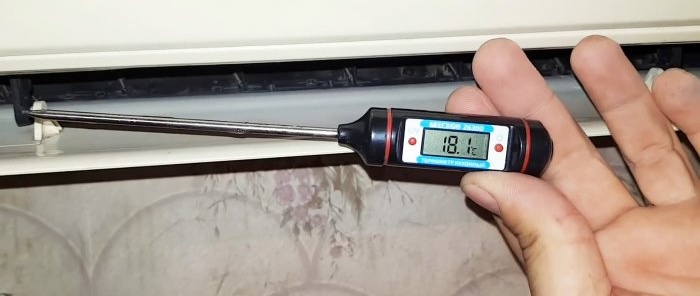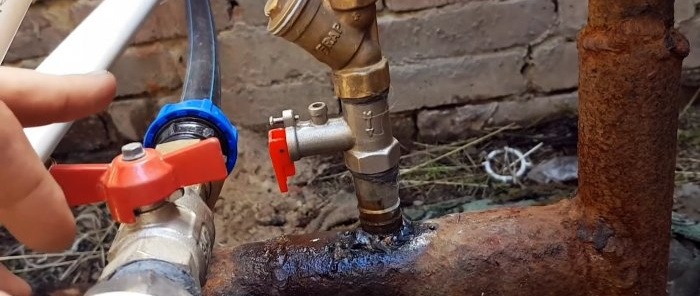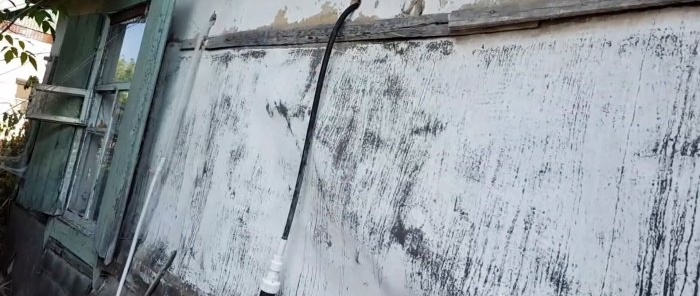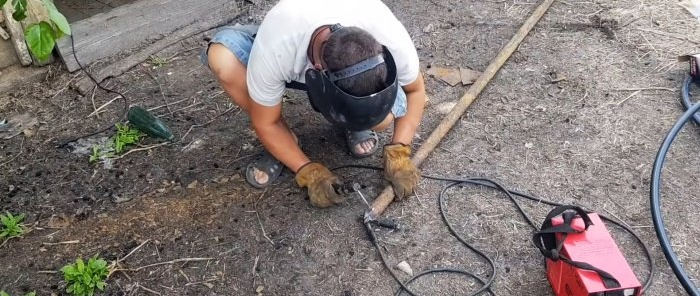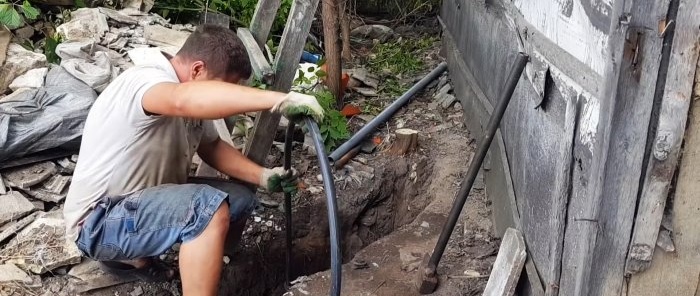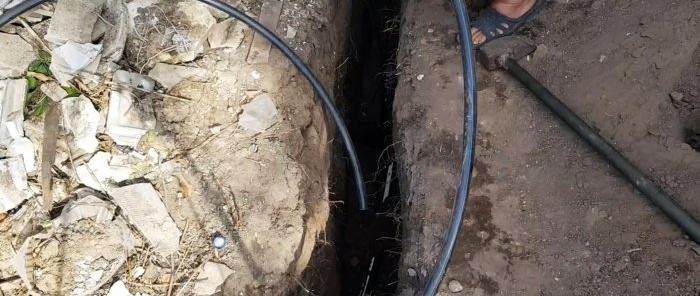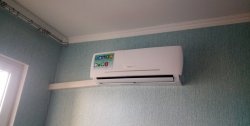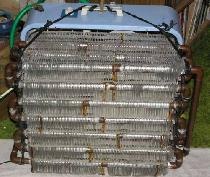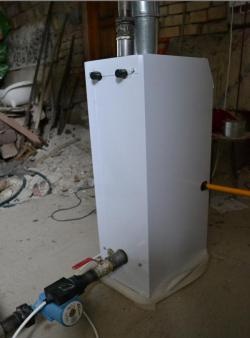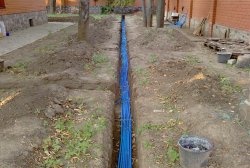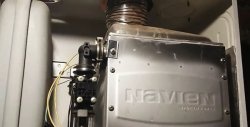With the onset of summer, I really want to turn on the air conditioner, but few people buy it, since it is quite expensive and also consumes a lot of electricity. If you have a well on your property, then you can use cold water from it to supply the internal unit of the split system instead of freon. In this case, energy consumption will be about 150 W/hour. To assemble this system, an inexpensive used indoor air conditioner unit is suitable.
Materials:
- Split system indoor unit;
- PP pipes and fittings 20 mm;
- check valve for water;
- circulation pump for heating systems;
- mud filter;
- steel pipe 50 mm;
- polyethylene pipe 25 mm.
Air conditioning system manufacturing process
The essence of this system is to take some cold water from the well, providing a slow flow of about 20 l/min, and pass it through the internal block of the split system instead of freon.The fan of the latter will blow on the radiator cooled in this way, and thereby very effectively lower the temperature in the house. As a result, we get a small consumption of electricity to operate the fan of the air conditioning unit and the circulation pump. Waste free water from your own well can be drained into an irrigation tank or simply into the ground.
The first step is to supply water from the well to the air conditioner. For this, a PP pipe with a cross section of 20 mm is used. You need to connect to the water supply system at home before the main pump, which pumps pressure into the accumulator, so that the pumping is carried out by the circulation pump. Be sure to use a check valve from the boiler when inserting; it will be necessary to start the system. After this, a mud filter is also installed in the line.
In the future, for the system to start, the pipe with the installed circulation pump will need to be filled with water. For this you need a check valve from the boiler. It will be possible to pour water into the system, and by lifting the valve flag, pump it through, bleeding the air.
Next, you need to decide where the heated waste water will be drained. You can collect it in a tank, but if this is not required, then it is better to lower it into the ground. To do this, you need to know at what level the groundwater lies in your area. Then a steel pipe with a cross-section of 50 mm is selected to make perforated drainage. It will be driven into the ground to the depth of groundwater, which will allow the run-in to immediately reach them, rather than slowly be absorbed.
A point needs to be formed at the end of this pipe so that it can be hammered. Drainage holes are made with a large drill at a distance of at least 70 cm from its edge.
The casing pipe is driven into the ground.Then the end of a polyethylene water pipe is lowered into it, through which the water from the air conditioner will drain.
Then the indoor air conditioner unit is installed in the house. Adapters are soldered to its copper tubes. A pipe for water from a well is installed to supply liquid freon, and drainage is connected to the second for gaseous refrigerant. It is required to achieve absolute tightness.
A circulation pump is installed in the line upstream of the block.
Here everything is done in the same way as with heating systems. The pipe is filled with water so that he can begin pumping from the well. Now turning it on and starting the unit fan, you can cool the air. As a result, when the water temperature in the well is +13°C, and the outside temperature is almost +30°C, the air conditioner produces +18°C. The electricity consumption of the pump is 150 W/hour, and the fan in the unit takes a little more.
